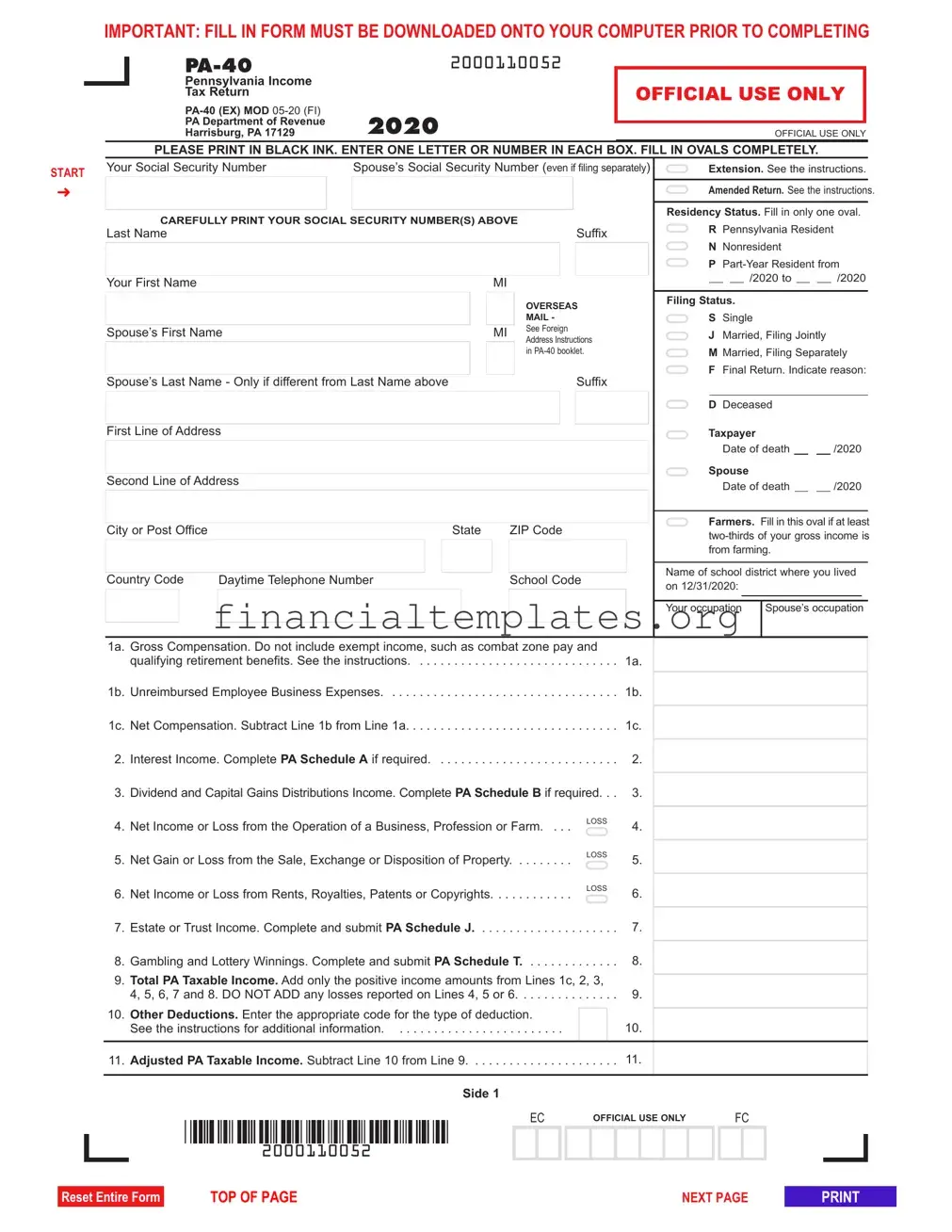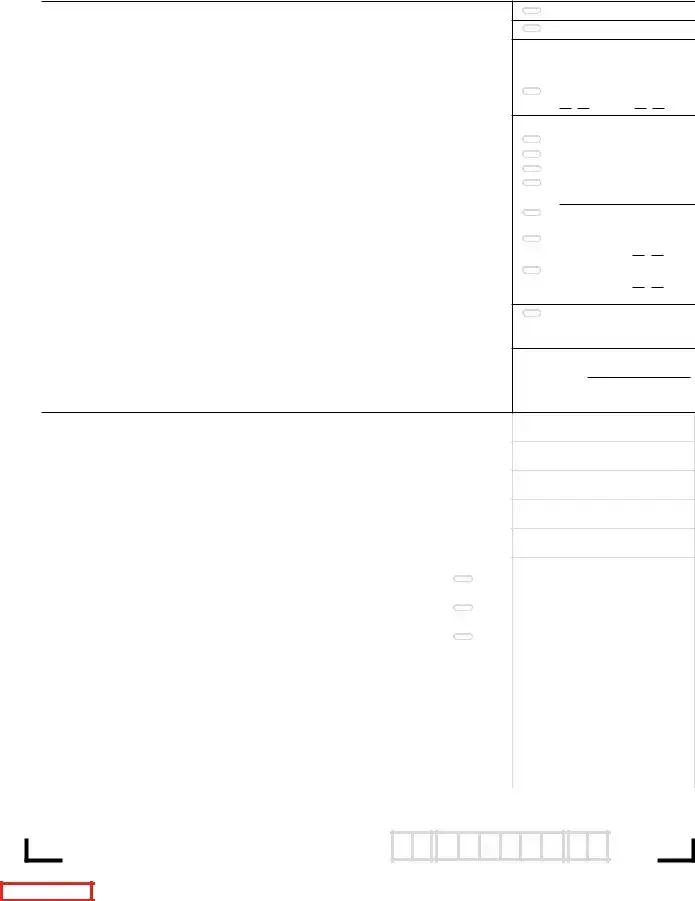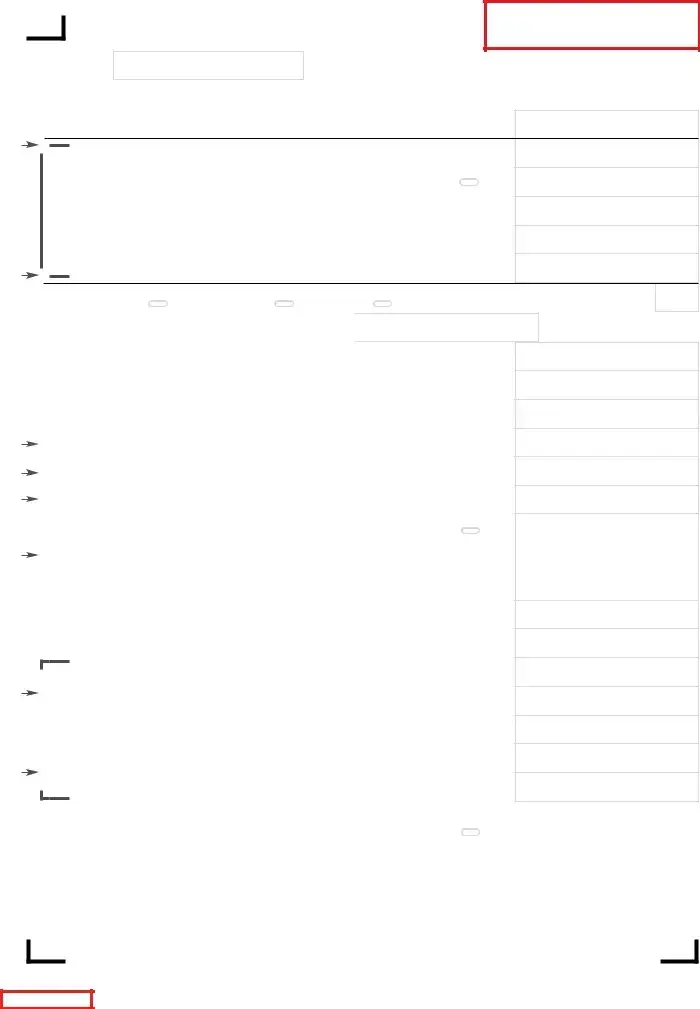The federal Form 1040, U.S. Individual Income Tax Return, closely resembles the PA-40 form in its purpose and structure. Both forms are designed for taxpayers to calculate and report their annual income tax to the respective tax authority. Each form gathers personal information, income details, deductions, and credits to determine tax liability or refund. They both also accommodate various income types, including wages, interest, dividends, and capital gains, ensuring a comprehensive accounting of an individual's financial activities within the fiscal year.
Form W-2, Wage and Tax Statement, is another document with similarities to the PA-40 form. While the W-2 is primarily for reporting wages paid to employees and taxes withheld by employers, it directly feeds into the PA-40 and its federal counterpart by providing essential data used to fill out these returns. Taxpayers use the information from Form W-2 to report their gross earnings and withheld taxes on the PA-40, making it an indispensable document during the tax-filing process.
The PA Schedule A, which details interest income, shares a purpose with sections of the PA-40 form that handle various types of income. This schedule is necessary for individuals who receive considerable amounts of interest over the tax year, requiring them to report this income separately for accuracy. This process mirrors how the PA-40 itself collects and categorizes different income sources to ensure that the tax calculations reflect the taxpayer's financial situation correctly.
Similarly, PA Schedule B is designed for dividend and capital gains distributions, paralleling the PA-40’s treatment of diverse income types. Taxpayers must use this schedule if they have income from dividends or capital gains, providing a detailed account that integrates with the broader tax return. This approach ensures clear and precise reporting, which is critical for accurate tax calculation and compliance.
Form 4868, Application for Automatic Extension of Time to File U.S. Individual Income Tax Return, shares a functional resemblance with the PA-40 in terms of tax administration. While not a direct part of the income reporting process, it impacts the filing deadline of the PA-40 by allowing taxpayers extra time. This extension is crucial for individuals who need additional time to gather information, ensuring their returns are complete and accurate.
The Schedule SP for PA Tax Forgiveness Credit, much like the federal Earned Income Credit, is aimed at reducing the tax burden on lower-income families. This schedule is an adjunct to the PA-40, meant for eligible residents to calculate and claim a state-specific relief measure. It highlights the broader system's approach to incentivize and support economically disadvantaged groups, integrating seamlessly with the main tax return form to assess and apply these benefits.
Form REV-459B, PA Estimated Tax Payment Voucher, is akin to the PA-40 in its role in tax payment processes. Though focused on estimated taxes for those not subject to withholding or who have additional income sources, it complements the PA-40 by accounting for tax liabilities outside of regular employment. This prepayment method ensures that taxpayers meet their tax obligations throughout the year, preventing underpayment penalties and aiding in smoother financial planning.
The Nonresident Tax Withheld (PA Schedule(s) NRK-1) serves nonresidents with income from Pennsylvania sources, analogous to the PA-40’s comprehensive income reporting for residents. This schedule ensures that nonresidents comply with Pennsylvania’s tax laws, reflecting the inclusive and detailed approach of the state’s tax system to account for all income attributable to its jurisdiction, thus maintaining equity and accuracy in tax matters.


 R
R  N
N 
